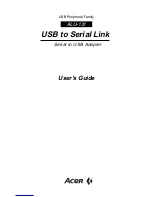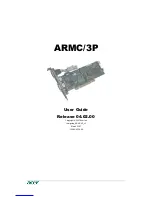
23
Chapter 3
Wireless LAN Network
This chapter provides background information on wireless LAN network.
3.1 Wireless LAN Overview
This section describes applications of IEEE 802.11n Wireless LAN USB Adapter.
3.1.1 SSID
The SSID is the unique ID used by Access Points and stations to identify a wireless Network.
Wireless clients associating to any Access Point must have the same SSID. The default setting is
ANY, which allows your IEEE 802.11n Wireless Network USB Adapter to automatically associate
to any Access Point (Infrastructure mode) in the vicinity of your wireless adapter. The ESS ID can
be set up to
32 characters
and is case sensitive.
3.1.2 Channel
A radio frequency used by a wireless device is called a channel.
3.1.3 Transmit Rate (Tx Rate)
The IEEE 802.11n Wireless Network USB Adapter support various transmit (data) rate. It includes
Auto
,
1 or 2 Mbps
,
5.5 Mbps
,
11 Mbps and up to 300Mbps.
In most networking scenarios, the
factory default “
Auto
” setting proves the most efficient. This setting allows your IEEE 802.11n
Wireless Network USB Adapter to operate at the maximum transmit (data) rate. When the
communications quality drops below a certain level, the Wireless Network USB Adapter will
automatically switch to a lower data rate. Transmission at lower data speed is usually more
reliable. However, when the communications quality improves again, the Wireless Network USB
Adapter will gradually increase the transmit (data) rate again until it reaches the highest available
transmit rate.
Note:
Actual speeds attained also depend on the distance from the AP, noise, etc.
















































